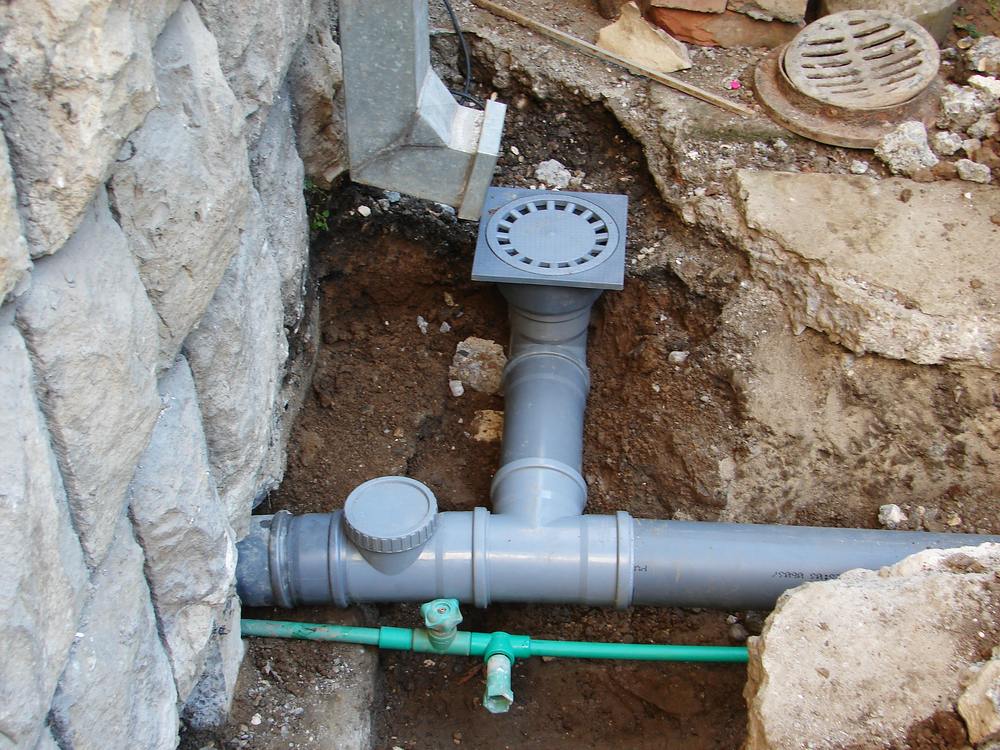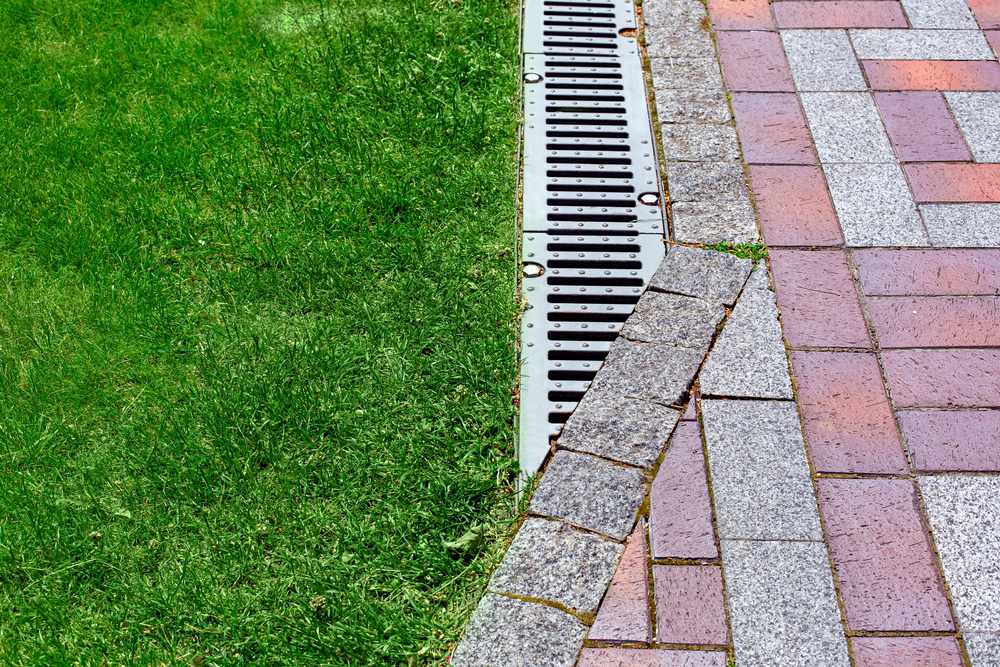
Drain issues in the yard are among the more frustrating outdoor issues a homeowner might have to deal with. A poorly drained yard will subject you to numerous lawn drainage problems. It might be irritating if your lawn becomes swampy each time it rains. Even worse, you might live in great fear that all the rainwater will end up in your home.
This article will journey you through tips and techniques on how to improve yard drainage.
What Is Lawn Drainage?
Lawn drainage, also known as yard drainage, is the process or system through which water or other liquids, such as sewage and waste, are drained from a property’s front yard or backyard. The major drainage systems include corrugated plastic tubes, dry well systems, French drains, bog areas in the landscape, and grassy swale.
Poor grading and drainage are profound concerns during the rainy seasons. By ensuring proper drainage and grading, you’ll prevent problems, such as water draining toward your property’s foundation or paddling in the landscape. Drainage helps to prevent soil erosion, reduces nutrient and soil loss from runoff, and ensures proper soil aeration.
Causes of Yard Water Drainage Issues
You won’t solve the drain issues in the yard if you only focus on stagnant water and how to eliminate it. The first step to fixing any drainage problem is to identify the cause of the lawn drainage issue. Below are the common poor yard drainage causes.
Improper Grading
The main goal of yard grading is to help direct water flow away from your property when it snows or rains. If your home wasn’t appropriately graded at its construction, it might result in water collecting or pooling where it isn’t required.
Improper grading may also lead to structural damage over time. Additionally, stagnant water may bring molds, pests, bugs, and other dangerous allergens.
Clogged or Damaged Drainage System
Downspouts and gutters on your property are essential for proper drainage. A poor or incorrect installation of these items might lead to faultiness. If you notice a regular gutter overflow, it’s time to check for any fault.
Additionally, if you have debris clogging your downspouts and gutters, it can deter smooth water flow from your lawn. Regular cleaning of downspouts and gutters can help stop any form of clogging.
Compact or Poorly Draining Soil
Poor soil structure is among the top causes of water drainage problems in yards. Soil that doesn’t drain well becomes saturated quite soon, preventing water from flowing away from your yard. As a result, your yard becomes waterlogged and struggles to dry out.
Also, compacted soil layers avert water from infiltrating and lead to surface stagnation.
Overwatering
When excessive downpours and water emerge from your lawn’s pipe openings, erosion is likely to occur. Water from your sprinklers, snow drainage, or rain can drain your yard.
While this isn’t a common issue, leaving a sprinkler on all night or leaving your garden tap running can cause unwanted water to overflow in your yard and, eventually, reach your house. Choosing the right yard irrigation system is key to reducing water use and minimizing the risk of overwatering.
How to Improve Yard Drainage
With full knowledge of what’s causing drainage problems within your yard, it’s relatively easy to find an ideal solution. Below are time-tested strategies to help you improve drainage in your yard.
Regrade the Yard to Promote Proper Water Flow
Regrading is a quick way to address yard drainage problems. By creating a proper slope, surface water will readily move away from your house. Even a subtle grading change can make a world of difference.
Alternatively, if there’s a low spot on your property that collects water yet there’s an insufficient slope to drain it, you can turn your soggy patch into a rain garden to help catch the rainfall and dry out the saturated areas.
Install or Repair Drainage Systems
Initiating a French garden and installing catch basins can be a great way to repair your yard water drainage system, control water flow, and reduce water stagnation.
A French garden consists of a drainage pipe running from the house down the drain length and a gravel-filled long trench or other substrate materials. They entail buried piping underneath the soil, providing a path for overflowing water to leave your yard.
On the other hand, catch basins will help you eliminate standing water from your lawn and prevent further water accumulation.
Improve Soil Structure Through Aeration, Amending, and Adding Organic Matter
To prevent poor drainage due to compact or poorly drained soil, you may need to amend your soil with organic matter, such as compost, to enhance its drainage.
Amending a high-clay-content soil is difficult. However, you can still eliminate the problem by aerating your yard regularly. You’ll loosen the soil through aeration and allow water to sip in. Rototilling the entire yard might be necessary if your yard is severely compacted.
Adjust Watering Habits and Use Drought-Tolerant Plants
If you have a permanently wet lawn, you can still embrace water. Consider planting a rain garden if your yard is soggy but doesn’t pull water. All you need for a proper rain garden is to choose some water-loving plants.
Adding native plants, such as rushes, mosses, and ferns, to your yard can significantly help. While these plants help to absorb water, their roots improve an area’s overall drainage.
Landscaping for Lawn Drainage
Landscape maintenance that helps keep your lawn drainage routes in perfect condition can be a great way to solve poor drainage problems. Consider the following landscaping tips for lawn drainage.
Use Raised Beds and Berms to Create Dry Areas
You can mound soil up 8 to 12 inches. This way, you’ll make it much easier for water to drain from the raised soil beds. Use sunken beds to address excessively drained soils.
Choose Plants That Tolerate Wet or Dry Conditions
If your efforts to divert accumulating water bear no fruit, consider planting trees and shrubs that don’t mind getting wet roots from time to time. Plants that can handle perennial submersion include the following:
- Yellow flag
- Water iris
- Water canna
- Sweet flag
- Spike rush
- Marsh marigold
- Japanese water iris
- Cordgrass
Incorporate Permeable Surfaces and Water-Absorbing Features
Incorporating permeable surfaces and water-absorbing features, such as a drainage swale and artificial creek, can help you fix a wet spot. These systems will help draw water away from low areas. Installing them involves digging a long, shallow trench in the soil and filling it with decorative rocks and gravel.
Maintenance and Prevention of Lawn Drainage
The best way to maintain healthy lawn drainage is to prevent the causes of poor drainage. Below are the poor drainage preventive measures worth considering.
Regularly Clean and Inspect Drainage Systems
A regular inspection and cleaning of your yard’s drainage system will help extend its lifespan and enhance the efficiency of the drain pipes. The advantages of a regular drainage system inspection and cleaning include the following:
- Keeps the outdoors clean
- Reduces pungent odor
- Prevents water accumulation
- Prevents serious drain clogs
Address Drainage Problems Promptly
Addressing drainage problems swiftly can save you massive amounts of money you would otherwise spend to repair or replace the damaged drains in the long run. For long-lasting solutions to your drainage problems, you need to pay attention to the following and ensure they’re properly fixed:
- Frozen pipes
- Flooding
- Root intrusions
- Cracked drains
- Pests in drains
- Collapsed drains
- Slow drains
- Blocked drains
- Smelly drains
Prevent Soil Compaction and Erosion
Preventing soil compaction and erosion is a great way to maintain a beautiful landscape while ensuring good water drainage. To reduce soil compaction and erosion:
- Add soil organic matter
- Avoid working with wet soils
- Use no-till soils
- Use vermiculite or perlite to promote water infiltration
- Check your soil regularly for moisture and resistance level
Work With Experts to Improve Your Yard Water Drainage

Runoff erosion, front walkways, impacted soils, short downspout, and improper grading are among the top causes of yard water drainage problems. You could counter these issues by regrading, repairing damaged drainages, improving soil structure, and landscaping.Proper lawn drainage prevents soil erosion, promotes increased leaching, improves soil physical properties, and provides a better environment for habitation.
To prevent drainage problems, you should encourage water infiltration, avoid working with wet soils and add organic matter. Contact ALD today for your drainage and landscaping services.
